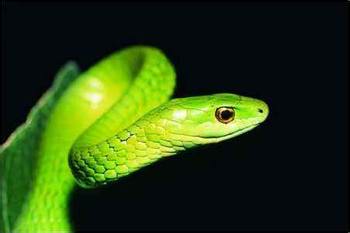PNAS:研究发现各种蛇物种之间的毒素基因和蛋白质表达的细微差异
英国利物浦热带医学院的人科研人员发现了各种蛇物种之间的毒素基因和蛋白质表达的细微差异,这强调了开发广谱蛇咬伤解毒剂面临的挑战。相关文章发表于2014年6月9日的《PNAS》杂志上。

每年蛇咬伤导致至多9万人死亡,多数是在贫穷的农村地区。由于蛇的毒液差异很大,能有效应对一种蛇类物种咬伤的抗蛇毒素常常对于亲缘物种的咬伤无效。
有毒液的蛇的基因组特定毒素基因的拷贝数量影响毒液成分,但是Nicholas Casewell及其同事检验了6种有亲缘关系的蝰蛇——四种锯鳞蝰蛇、撒哈拉角蝰蛇以及鼓腹咝蝰——的毒液腺的毒素基因表达和毒液蛋白质制造是否也影响这些蛇的毒液的构成。
这组作者报告说,这6种蛇被识别为毒素基因的基因组区域的转录百分比的范围是从44%到70%,而转化成毒液蛋白的表达百分比的范围是从35%到52%,这提示基因和蛋白质表达影响了这些物种的毒液内容。此外,小鼠的毒液诱导的病理变化,诸如出血和凝结,作为不同物种的蛇的毒液内容的函数而发生变化。
更重要的是,用一种锯鳞蝰蛇的毒液对羊进行免疫处理而制造出的抗蛇毒素对于中和小鼠体内的另一种锯鳞蝰蛇的毒液是无效的,这提示即便是毒液构成的微小差异也能够让抗蛇毒素无法对抗不同物种的毒液。这些发现强调了开发广谱蛇咬伤疗法的挑战。
原文摘要:
Nicholas R. Casewell, Simon C. Wagstaff, Wolfgang Wüster, Darren A. N. Cook, Fiona M. S. Bolton,Sarah I. King, Davinia Pla, Libia Sanz, Juan J. Calvete and Robert A. Harrison
Variation in venom composition is a ubiquitous phenomenon in snakes and occurs both interspecifically and intraspecifically. Venom variation can have severe outcomes for snakebite victims by rendering the specific antibodies found in antivenoms ineffective against heterologous toxins found in different venoms. The rapid evolutionary expansion of different toxin-encoding gene families in different snake lineages is widely perceived as the main cause of venom variation. However, this view is simplistic and disregards the understudied influence that processes acting on gene transcription and translation may have on the production of the venom proteome. Here, we assess the venom composition of six related viperid snakes and compare interspecific changes in the number of toxin genes, their transcription in the venom gland, and their translation into proteins secreted in venom. Our results reveal that multiple levels of regulation are responsible for generating variation in venom composition between related snake species. We demonstrate that differential levels of toxin transcription, translation, and their posttranslational modification have a substantial impact upon the resulting venom protein mixture. Notably, these processes act to varying extents on different toxin paralogs found in different snakes and are therefore likely to be as important as ancestral gene duplication events for generating compositionally distinct venom proteomes. Our results suggest that these processes may also contribute to altering the toxicity of snake venoms, and we demonstrate how this variability can undermine the treatment of a neglected tropical disease, snakebite.
作者:生物帮

